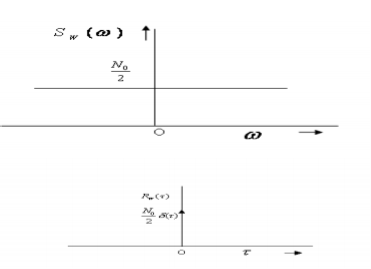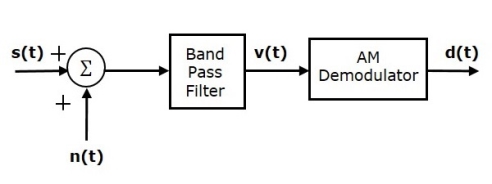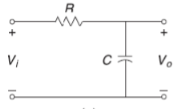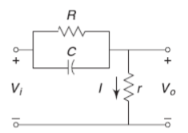Unit 6
Analog communication
A signal may be contaminated along the path by noise. Noise may be defined as any unwanted introduction of energy into the desired signal.
In radio receivers noise may produce hiss in the loud speaker output. Hence noise is random and unpredictable.
Noise is produced in both external and internal to the system.
External noise includes
- Atmospheric noise (lightening)
- Galactic noise(thermal radiation)
- Industrial noise (from motors, ignition)
We can minimize or eliminate external noise by proper system design.
Internal noise is generated inside the system.It is resulted due to random motion of charged particles in resistors, conductors and electronic devices.
With proper design it can be minimized but never can be eliminated.
Types of Noise
- White Noise
- Thermal noise
- Shot noise
- Partition noise
- Low frequency or flicker noise
- Burst noise
- Avalanche noise
- White Noise
One of the important random processes is the white noise process. Noises in many practical situations are approximated by the white noise process.
White noise plays an important role in modelling of WSS signals. A white noise process W(t) is a random process that has constant power spectral density at all frequencies.
Thus
S w(w) = N0/2 ----------------(1) - ∞<w<∞
Where No is real constant and called the intensity of the white noise. The corresponding autocorrelation is given by
Rw( = N/2
= N/2  (
( where
where  (
( is the Dirac delta.
is the Dirac delta.
The average power of white noise
P wg = E W 2 = 1/2π dw -> ∞
dw -> ∞
The autocorrelation function and the PSD of white noise process is shown in Figure.

Fig.1: Autocorrelation function
- Thermal Noise
- Thermal noise is the electronic noise generated by thermal agitation of charge carriers inside an electrical conductor in equilibrium, which happens regardless of any applied voltage.
- Movement of electrons will form kinetic energy in the conductor related to temperature in the conductor.
- When the temperature increases the movement of electrons increases and current flows through the conductor.
- Current flows due to free electrons which create noise voltage n(t).
- Noise voltage is influenced by temperature hence it is called thermal noise.
Q. Calculate the thermal noise power available from any resistor at room temperature (290K) for a bandwidth of 1Mhz . Calculate also the corresponding noise voltage given that R = 50 Ω.
Pn = 1.38 x 10 -23 x 290 x 10 6
= 4 x 10 -15.
En2 = 4 x 50 x 1.38 x 10 -23 x 290
= 0.895 µ V
- Shot Noise
- Shot noise arises because the current consists of a vast number of discrete charges.
- The continuous flow of these discrete pulses gives rise to almost white noise. There is a cut-off frequency by the time it takes for the electron or other charge carrier to travel through the conductor.
- Unlike thermal noise, this noise is dependent upon the current flowing and has no relationship to the temperature at which the system is operating.
- Shot noise is more apparent in devices such as PN junctions. The electrons are transmitted randomly and independently of each other.
- Partition Noise
When the circuit is to divide in between two or more paths then the noise generated is known as Partition noise. The reason for this generation is random fluctuation in the division.
- Flicker Noise
Flicker noise or modulation noise is the one appearing in transistors operating at low audio frequencies. Flicker noise is proportional to the emitter current and junction temperature. However, this noise is inversely proportional to the frequency.
- Burst Noise
Burst noise consists of step-like transitions suddenly between two or more discrete voltages or current levels.
Each shift in offset voltage or current lasts for millisecond to seconds . It is also known as popcorn noise because of the popping or crackling sound it produces in audio circuits.
- Avalanche Noise
Avalanche noise is the noise produced when a junction diode is operated at the onset of avalanche break down , a semiconductor junction phenomenon in which the carriers having high voltage gradient develop sufficient energy to dislodge additional carriers through physical impact creating ragged current flow.
Key Takeaways:
- The average power of white noise
P wg = E W 2 = 1/2π dw -> ∞
dw -> ∞
2. Noise may be defined as any unwanted introduction of energy into the desired signal.
Signal to Noise Ratio
Signal-to-Noise Ratio (SNR) is the ratio of the signal power to noise power. The higher the value of SNR, the greater will be the quality of the received output.
Figure of Merit
The ratio of output SNR and input SNR can be termed as Figure of Merit. It is denoted by F. It describes the performance of a device.
F=(SNR)O/(SNR)I
SNR for AM
Consider the following receiver model of AM system to analyze noise.

Fig.2: Receiver model of AM system
Channel signal to noise ratio is given by

Where W is the bandwidth and  is modulation index
is modulation index
Output signal-to-noise ratio (of AM receiver) is given by

SNR for FM

Transmitted power of an FM waveform:

From 

SNR for PM


Numericals:
The diagram below represents the first three stages of a typical AM or FM receiver. Find the following quantities

(a) 


(b) 
 ,
,


(c) 



(d) 




2. The signal power at the input to a receiver is 6.2nW and the noise power at the input to that receiver is 1.8nW. Find SNR and SNRdB


Use of emphasis Circuit in FM for SNR optimization
Comparison: FM and AM
Let us compare the result for sinusoidal 100% modulation

FM is better if  or more. But this comes at the cost of higher bandwidth as
or more. But this comes at the cost of higher bandwidth as

For  and bandwidth of AM system is
and bandwidth of AM system is 

Several authors to make the comparison not on the basis of equal power but rather on the basis of equal signal power measured when the modulation  In this case, as it can be easily verified, we find that the above equation can be replaced by
In this case, as it can be easily verified, we find that the above equation can be replaced by

Use of Pre-emphasis and DE-emphasis circuit:


Fig.3: De-emphasis network Pre-emphasis network








The improvement in signal-to-noise ratio which results from pre-emphasis depends on the frequency dependence of the PSD of the baseband signal.
Key Takeaways:
References:
- “Electronic communication system”, by Kennedy, TMH
- “Communication system”, by haykin wiley
- “Communication system”, by bruce carison, TMH
- “Modern digital and analog communication”, B.P. LATHI, Oxford

